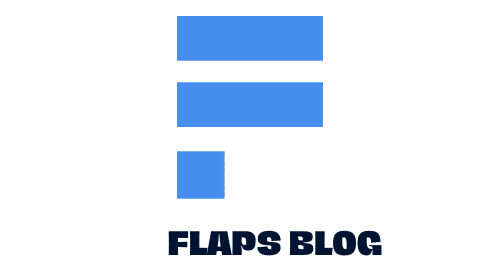How Is Technology Facilitating the Transition to Personalized Digital Learning Environments?

The advent of technology has seen unprecedented changes in multiple fields, and education is no exception. Today, we are witnessing a paradigm shift in the educational landscape, as traditional classroom teaching gives way to dynamic, personalized digital learning environments. This shift, fueled by technological advancements, has completely reimagined the learning experience for students. It leverages online platforms and resources, harnessing the power of data to provide a tailored educational journey for every learner.
The advent of educational technology: reshaping the classroom
In the past decade, technology has made significant inroads into the realm of education. The transformation has been so profound that it has necessitated a complete redesign of the classroom experience. Digital platforms and tools are becoming commonplace, replacing the one-size-fits-all model with a learner-centered approach.
A lire également : Unbox the thrills: your ultimate zombies mystery box awaits!
With technology, educators now have the means to create interactive, engaging lessons that cater to the individual learning styles of their students. Online platforms have become a repository of resources that students can access anytime, anywhere. The use of digital tools in the classroom has not only enhanced the teaching process but also empowered students to take charge of their own learning.
Data-driven personalized learning: the role of technology
A critical aspect of personalized learning is the ability to cater to the unique needs and abilities of each student. Here, technology plays a pivotal role with the help of data. Through sophisticated algorithms and data analytics, online learning platforms can track student performance, identify learning gaps, and provide personalized resources and support to help students improve.
Cela peut vous intéresser : What Is the Impact of Wearable Fitness Technology on Personal Health Data Privacy?
Educational technology leverages the power of data to tailor the learning experience to each student’s strengths, weaknesses, interests, and pace of learning. This process encompasses everything from customizing lesson plans and assignments to generating personalized feedback and recommendations. The end result is a learning environment that evolves with the student, encouraging them to be active participants in their educational journey.
The power of collaboration: technology as a facilitator
Technology has also revolutionized the concept of collaboration in education. Online platforms provide a virtual space where students and teachers can interact, share ideas, and work together on projects. These collaborative tools foster a sense of community and promote peer-to-peer learning, enhancing the overall learning experience.
Moreover, technology enables seamless communication between educators and students, fostering an open dialogue that is crucial for effective teaching and learning. Whether it’s a discussion forum, a group project, or a one-on-one tutoring session, digital platforms facilitate collaboration in a way that transcends geographical boundaries and time constraints.
Bridging the gap with technology: democratizing access to education
One of the most commendable contributions of technology to education is its ability to democratize access. With online learning platforms, quality education is no longer confined within the four walls of a classroom. Regardless of geographical location, socio-economic status, or physical ability, students around the world can now access a plethora of educational resources at their fingertips.
Technology has broken down barriers, enabling learning to happen anytime, anywhere. As long as they have an internet connection, students can learn at their pace, in their own time. This is particularly beneficial for those who may not have easy access to traditional educational institutions, opening doors to endless learning opportunities.
The role of educators in the digital age: adapting to the new normal
The transition to personalized digital learning environments has necessitated a shift in the role of educators. Teachers are no longer merely knowledge dispensers; they are now facilitators, guides, and mentors. In this digital age, educators need to be technologically savvy, adept at using various digital platforms and tools to deliver effective instruction.
Moreover, teachers are responsible for creating an inclusive and engaging digital learning environment. This includes curating relevant online resources, incorporating interactive elements in lessons, and providing personalized support to students. The role of educators is more crucial than ever in helping students navigate the digital learning landscape and maximizing the potential of technology-aided education.
The influence of technology on education is undeniable. As we continue to embrace digital learning environments, it becomes increasingly evident that technology is not just a tool but a catalyst for educational transformation. It is reshaping the way we teach, learn, and collaborate, paving the way for a dynamic, personalized, and inclusive future of education.
The Evolution of Adaptive Learning Systems: The Future of Personalized Learning
The concept of personalized learning has been significantly bolstered by the development of adaptive learning systems. These systems utilize advanced technology to create a learning environment that is dynamically responsive to each student’s unique needs and learning pace. By leveraging educational technology, these systems can identify a learner’s strengths and weaknesses, adjust the difficulty of tasks in real time, and provide personalized feedback to enhance the student’s learning experience.
Adaptive learning systems utilize a variety of digital tools and resources, such as virtual simulations, interactive modules, and multimedia content. Coupled with the power of data analytics, these features facilitate a highly personalized learning experience that can adapt to the learner’s progress in real-time. This dynamic approach to education fosters a learner-centered environment, enhancing student engagement and promoting active participation in the learning process.
Moreover, the ability of adaptive learning systems to track student performance and provide real-time feedback supports evidence-based decision making. Teachers can use this data to monitor student progress, identify learning gaps, and tailor their instruction accordingly. This data-driven approach ensures that no student is left behind, enhancing the overall effectiveness of the learning experience.
Conclusion: Embracing the Future of Digital Learning
The integration of technology in education has truly redefined the landscape of learning. We are witnessing a transformation from a one-size-fits-all education system towards a more personalized, dynamic, and interactive learning environment. The transition to personalized digital learning environments, facilitated by technology, has the potential to enhance student engagement, empower learners, and democratize access to high-quality education.
As we continue to embrace digital learning, it is clear that educational technology has an integral role in shaping the future of education. The power of technology to bridge the digital divide, foster critical thinking, and facilitate student access to educational resources is profound. The advent of online learning platforms and adaptive learning technologies is a testament to this.
However, it is important to remember that technology, despite its transformative potential, is merely a tool. The onus is upon us, as educators, to harness its power effectively and responsibly. This entails creating inclusive digital learning environments, promoting digital literacy, and leveraging data to provide personalized learning experiences.
As we stand on the cusp of a new era in education, let us embrace the opportunities and challenges that come with it. Let us harness the power of technology to create dynamic, personalized learning environments that empower every learner to reach their full potential. May we continue to innovate and adapt, paving the way for a brighter, more inclusive future of education.
